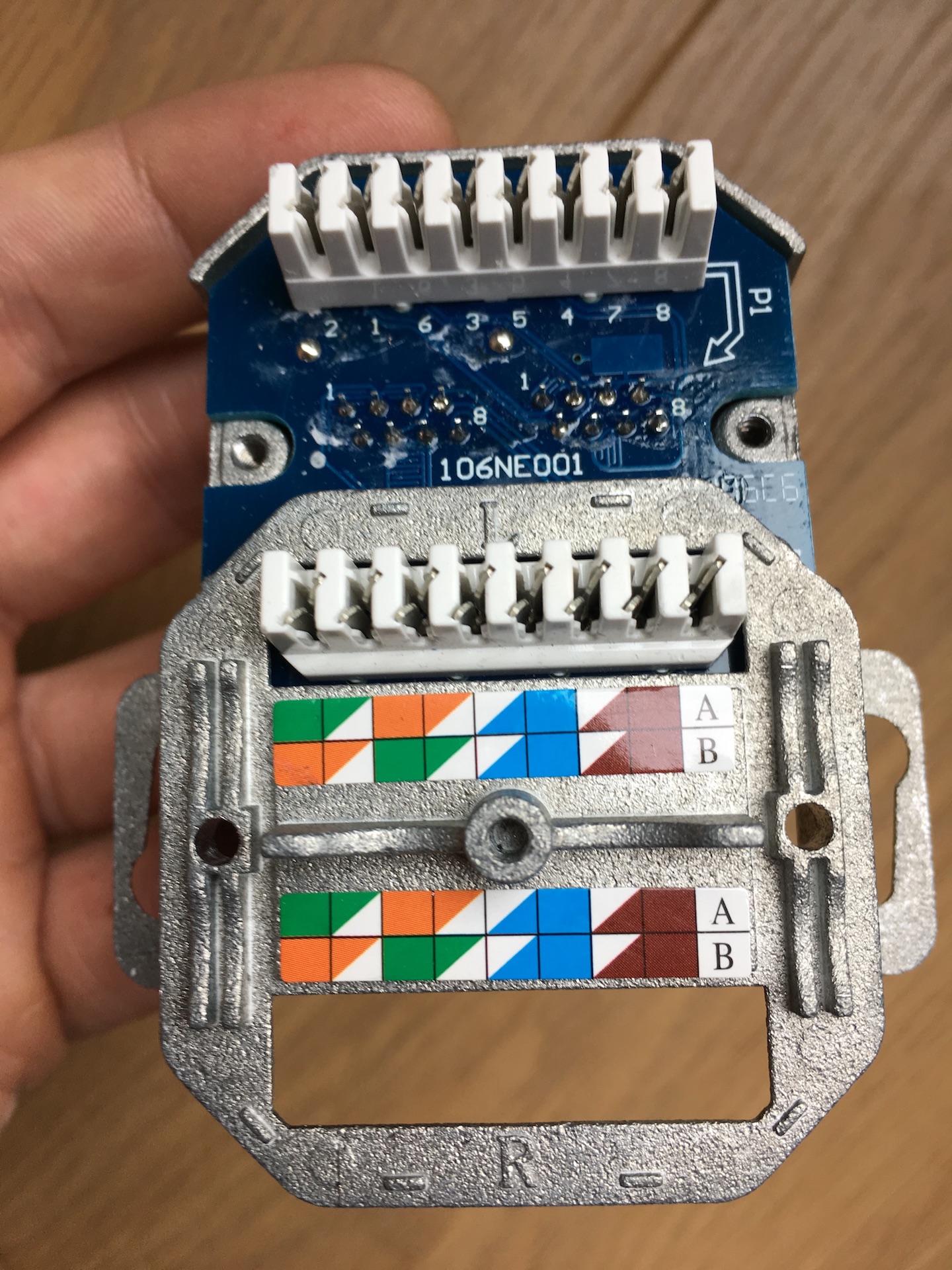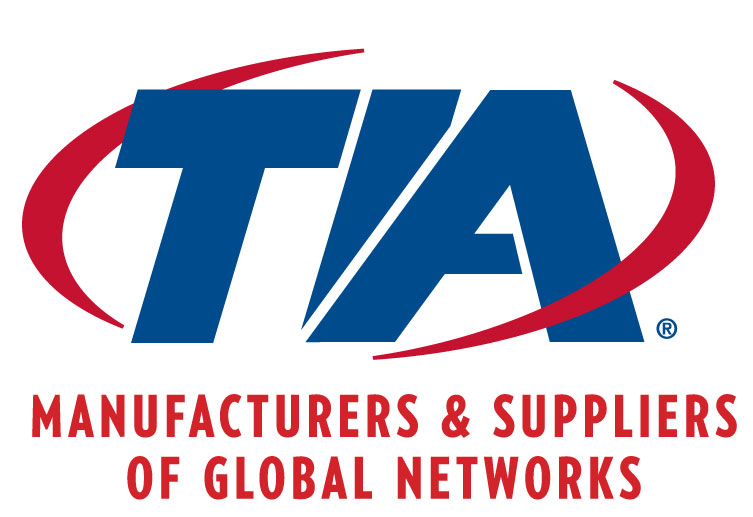|
Cat 6 Cable
Category 6 cable (Cat 6) is a standardized twisted pair cable for Ethernet and other network physical layers that is backward compatible with the Category 5/5e and Category 3 cable standards. Cat 6 must meet more stringent specifications for crosstalk and system noise than Cat 5 and Cat 5e. The cable standard specifies performance of up to 250 MHz, compared to 100 MHz for Cat 5 and Cat 5e. Whereas Category 6 cable has a reduced maximum length of when used for 10GBASE-T, Category 6A cable is specified for 500 MHz and has improved alien crosstalk characteristics, allowing 10GBASE-T to be run for the same maximum distance as previous Ethernet over twisted pair variants. History Cat 6, an unshielded twisted-pair (UTP) design, emerged as an advancement of the UTP Cat 5e and was formalised in 2001. The design of Cat 6 required more stringent precision in manufacturing, which enabled reduced noise an ... [...More Info...] [...Related Items...] OR: [Wikipedia] [Google] [Baidu] |
ANSI/TIA-568
ANSI/TIA-568 is a technical standard for commercial building cabling for telecommunications products and services. The title of the standard is ''Commercial Building Telecommunications Cabling Standard'' and is published by the Telecommunications Industry Association (TIA), a body accredited by the American National Standards Institute (ANSI). , the revision status of the standard is ''ANSI/TIA-568-E'', published 2020, which replaced ANSI/TIA-568-D of 2015, revision C of 2009, revision B of 2001, and revision A of 1995, and the initial issue of 1991, which are now obsolete. Perhaps the best-known features of ANSI/TIA-568 are the pin and pair assignments for eight-conductor 100-ohm balanced twisted pair cabling. These assignments are named ''T568A'' and ''T568B''. History ANSI/TIA-568 was developed through the efforts of more than 60 contributing organizations including manufacturers, end-users, and consultants. Work on the standard began with the Electronic Industries Alliance (EI ... [...More Info...] [...Related Items...] OR: [Wikipedia] [Google] [Baidu] |
IEEE
The Institute of Electrical and Electronics Engineers (IEEE) is an American 501(c)(3) organization, 501(c)(3) public charity professional organization for electrical engineering, electronics engineering, and other related disciplines. The IEEE has a corporate office in New York City and an operations center in Piscataway, New Jersey. The IEEE was formed in 1963 as an amalgamation of the American Institute of Electrical Engineers and the Institute of Radio Engineers. History The IEEE traces its founding to 1884 and the American Institute of Electrical Engineers. In 1912, the rival Institute of Radio Engineers was formed. Although the AIEE was initially larger, the IRE attracted more students and was larger by the mid-1950s. The AIEE and IRE merged in 1963. The IEEE is headquartered in New York City, but most business is done at the IEEE Operations Center in Piscataway, New Jersey, opened in 1975. The Australian Section of the IEEE existed between 1972 and 1985, after which it s ... [...More Info...] [...Related Items...] OR: [Wikipedia] [Google] [Baidu] |
Ground Loop (electricity)
In an electrical system, a ground loop or earth loop occurs when two points of a circuit are intended to have the same ground reference potential but instead have a different potential between them. This is typically caused when enough current is flowing in the connection between the two ground points to produce a voltage drop and cause the two points to be at different potentials. Current may be produced in a ground loop by electromagnetic induction. Ground loops are a major cause of noise, hum, and interference in audio, video, and computer systems. Wiring practices that protect against ground loops include ensuring that all vulnerable signal circuits are referenced to one point as ground. The use of differential signaling can provide rejection of ground-induced interference. The removal of ground connections to equipment in an effort to eliminate ground loops will also eliminate the protection the safety ground connection is intended to provide. Description A ground l ... [...More Info...] [...Related Items...] OR: [Wikipedia] [Google] [Baidu] |
10/100/1000
Ethernet over twisted-pair technologies use twisted-pair cables for the physical layer of an Ethernet computer network. They are a subset of all Ethernet physical layers. Early Ethernet used various grades of coaxial cable, but in 1984, StarLAN showed the potential of simple unshielded twisted pair. This led to the development of 10BASE-T and its successors 100BASE-TX, 1000BASE-T, 10GBASE-T and 40GBASE-T, supporting speeds of 10 and 100 megabit per second, then 1, 10 and 40 gigabit per second respectively. Two new variants of 10 megabit per second Ethernet over a ''single'' twisted pair, known as 10BASE-T1S and 10BASE-T1L, were standardized in IEEE Std 802.3cg-2019. 10BASE-T1S has its origins in the automotive industry and may be useful in other short-distance applications where substantial electrical noise is present. 10BASE-T1L is a long-distance Ethernet, supporting connections up to 1 km in length. Both of these standards are finding applications implementing the ... [...More Info...] [...Related Items...] OR: [Wikipedia] [Google] [Baidu] |
Sybex
John Wiley & Sons, Inc., commonly known as Wiley (), is an American multinational publishing company that focuses on academic publishing and instructional materials. The company was founded in 1807 and produces books, journals, and encyclopedias, in print and electronically, as well as online products and services, training materials, and educational materials for undergraduate, graduate, and continuing education students. History The company was established in 1807 when Charles Wiley opened a print shop in Manhattan. The company was the publisher of 19th century American literary figures like James Fenimore Cooper, Washington Irving, Herman Melville, and Edgar Allan Poe, as well as of legal, religious, and other non-fiction titles. The firm took its current name in 1865. Wiley later shifted its focus to scientific, technical, and engineering subject areas, abandoning its literary interests. Wiley's son John (born in Flatbush, New York, October 4, 1808; died in East Orang ... [...More Info...] [...Related Items...] OR: [Wikipedia] [Google] [Baidu] |
Half-power Point
The half-power point is the condition at which a system's output power has dropped to half of its peak value; that is, at a level of approximately . In filters, optical filters, and electronic amplifiers, the half-power point is also known as half-power bandwidth and is a commonly used definition for the cutoff frequency. In the characterization of antennas the half-power point is also known as half-power beamwidth and relates to measurement position as an angle and describes directionality. Amplifiers and filters This occurs when the output voltage has dropped to \tfrac \approx \text of the filter's nominal passband voltage and the power has dropped by half. A bandpass amplifier will have two half-power points, while a low-pass amplifier or a high-pass amplifier will have only one. The bandwidth of a filter or amplifier is usually defined as the difference between the lower and upper half-power points. This is, therefore, also known as the bandwidth. There is no lower hal ... [...More Info...] [...Related Items...] OR: [Wikipedia] [Google] [Baidu] |
ISO/IEC 11801
International standard ISO/IEC 11801 ''Information technology — Generic cabling for customer premises'' specifies general-purpose telecommunication cabling systems (structured cabling) that are suitable for a wide range of applications (analog and ISDN telephony, various data communication standards, building control systems, factory automation). It is published by ISO/IEC JTC 1/ SC 25/WG 3 of the International Organization for Standardization (ISO) and the International Electrotechnical Commission (IEC). It covers both balanced copper cabling and optical fibre cabling. The standard was designed for use within commercial premises that may consist of either a single building or of multiple buildings on a campus. It was optimized for premises that span up to 3 km, up to 1 km2 office space, with between 50 and 50,000 persons, but can also be applied for installations outside this range. A major revision was released in November 2017, unifying requirements for commercial ... [...More Info...] [...Related Items...] OR: [Wikipedia] [Google] [Baidu] |
Copper-clad Aluminium Wire
Copper-clad aluminium wire (CCAW or CCA) is a dual-metal electrical conductor composed of an inner aluminium core and outer copper cladding. Production A copper strip is formed into the shape of a cylinder, while it is being wrapped around an aluminum core and the edges of the copper strip are welded together. The assembly is then pulled through a die, where the cladded wire is squeezed and stretched while also improving the bonding between the copper and the aluminum core. Uses The primary applications of this conductor revolve around weight reduction requirements. These applications include high-quality coils, such as the voice coils in headphones or portable loudspeakers; high frequency coaxial applications, such as RF antennas and cable television distribution cables; and power cables. CCA was also used in electrical wiring for buildings. The copper/aluminium construction was adopted to avoid some of the problems with aluminium wire yet retain most of the cost advantag ... [...More Info...] [...Related Items...] OR: [Wikipedia] [Google] [Baidu] |
8P8C
A modular connector is a type of electrical connector for cords and cables of electronic devices and appliances, such as in computer networking, telecommunication equipment, and audio headsets. Modular connectors were originally developed for use on specific Bell System telephone sets in the 1960s, and similar types found use for simple interconnection of customer-provided telephone subscriber premises equipment to the telephone network. The Federal Communications Commission (FCC) mandated in 1976 an interface registration system, in which they became known as registered jacks. The convenience of prior existence for designers and ease of use led to a proliferation of modular connectors for many other applications. Many applications that originally used bulkier, more expensive connectors have converted to modular connectors. Probably the best-known applications of modular connectors are for Telephone line, telephone and Ethernet. Accordingly, various electronic interface specif ... [...More Info...] [...Related Items...] OR: [Wikipedia] [Google] [Baidu] |
Telecommunications Industry Association
The Telecommunications Industry Association (TIA) is accredited by the American National Standards Institute (ANSI) to develop voluntary, consensus-based industry standards for a wide variety of information and communication technology (Information and communication technologies, ICT) products, and currently represents nearly 400 companies. TIA's Standards and Technology Department operates twelve engineering committees, which develop guidelines for private radio equipment, cellular towers, data terminals, satellites, telephone terminal equipment, accessibility, VoIP devices, structured cabling, data centers, mobile device communications, multimedia multicast, vehicular telematics, healthcare ICT, Machine to machine, machine to machine communications, and smart grid, smart utility networks. Active participants include communications equipment manufacturers, service providers, government agencies, academic institutions, and end-users are engaged in TIA's standards setting proces ... [...More Info...] [...Related Items...] OR: [Wikipedia] [Google] [Baidu] |







